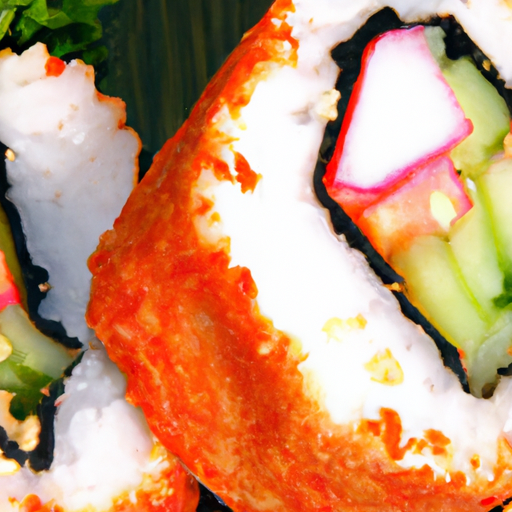The Hawaiian Bun: A Sweet and Savory Delight
Hawaii is renowned for its stunning landscapes and vibrant culture, but did you know that it has also gifted the world with a delectable culinary treasure? The Hawaiian bun, also known as the sweet roll, is a delightful pastry that combines the perfect balance of sweetness and savory flavors. In this blog post, we will delve into the wonderful world of Hawaiian buns, exploring their taste, common uses in cooking, nutritional value, and uncovering some interesting history and facts.
A Taste Like No Other
The moment you sink your teeth into a Hawaiian bun, you are transported to a tropical paradise. These heavenly rolls are soft, fluffy, and subtly sweet. Reminiscent of brioche, they possess a delicate buttery taste, making them irresistible to bread lovers worldwide. The addition of pineapple juice to the dough not only enhances the sweetness but also gives it a unique tangy undertone that truly sets Hawaiian buns apart.
Versatile in the Kitchen
The Hawaiian bun’s versatility is astounding, making it an essential ingredient in various culinary creations. As a result of its delicate sweetness and light texture, it is the perfect vessel for both sweet and savory fillings. When used in sandwiches, the buns add a touch of sweetness that beautifully complements the fillings, creating a delightful contrast of flavors. From classic ham and cheese sliders to melt-in-your-mouth pulled pork sandwiches, the Hawaiian bun effortlessly elevates any dish to new heights.
Beyond sandwiches, these buns can be transformed into heavenly French toast, bread pudding, or even used as a base for a tropical twist on the traditional bread and butter pudding. For those with a sweet tooth, they make for an exceptional choice to prepare sliders filled with cream cheese, fresh fruits, or even Nutella for an indulgent treat.
Nutritional Value and Considerations
While the Hawaiian bun is undeniably delicious, it’s important to consider its nutritional content. These buns are typically high in carbohydrates and calories due to their sweet nature and added ingredients. However, they also provide essential nutrients and energy. Moderation is key when savoring these delightful rolls, ensuring they are enjoyed as part of a well-balanced diet.
A Brief History and Interesting Facts
The origins of the Hawaiian bun can be traced back to Portuguese immigrants who settled in the Hawaiian islands in the late 19th and early 20th centuries. These immigrants brought with them their traditional bread recipes, resulting in the fusion of Hawaiian ingredients and Portuguese techniques. Over time, the Hawaiian bun became an integral part of the islands’ culinary identity.
Interestingly, the popularity of the Hawaiian bun skyrocketed when a well-known fast-food chain introduced the famous “Hawaiian burger” in the 1970s. The burger featured a char-grilled beef patty topped with a slice of juicy pineapple, all nestled within a soft and sweet Hawaiian bun. Since then, these buns have gained recognition and popularity in various parts of the world.
Give the Hawaiian Bun a Try!
Whether you’re planning a tropical-themed picnic or looking to jazz up your next backyard barbecue, incorporating Hawaiian buns into your menu will undoubtedly impress your guests. With their unique flavor profile, versatility, and intriguing history, these sweet and savory rolls have become a cherished addition to the global culinary repertoire. So why not give them a try? Get ready to immerse yourself in a taste sensation that will transport you straight to the beautiful shores of Hawaii. Aloha!
Hawaiian Bun
Origin: The Hawaiian bun, also known as the Hawaiian sweet roll, originated in Hawaii in the 1950s. It was created by Robert Taira, a Japanese-American baker, who developed a unique recipe using his family’s secret Hawaiian bread starter.
Common uses: Hawaiian buns are widely used as a versatile and flavorful alternative to regular buns. They are popular for making sliders, mini sandwiches, and burger buns. They are also enjoyed on their own as a sweet treat or served with savory dishes.
Nutritional benefits: Hawaiian buns are typically made with a blend of ingredients that includes flour, sugar, eggs, butter, and milk. While they are delightfully soft and slightly sweet, they are also relatively high in calories and carbohydrates. However, they can provide some essential nutrients like protein, calcium, and iron, depending on the specific recipe.
Unique properties and historical significance: Hawaiian buns are characterized by their rich, pillowy texture and slightly sweet taste. They often feature a shiny golden-brown crust. These buns gained popularity due to their unique flavor and have become a staple in Hawaiian cuisine. They are often served during festive occasions such as luaus and are an important part of traditional Hawaiian meals.
Additionally, Hawaiian buns have gained widespread popularity outside of Hawaii, becoming a common option in many American households and restaurants. They have inspired various adaptations and are used in a wide range of creative culinary applications.




Use the share button below if you liked it.
It makes me smile, when I see it.